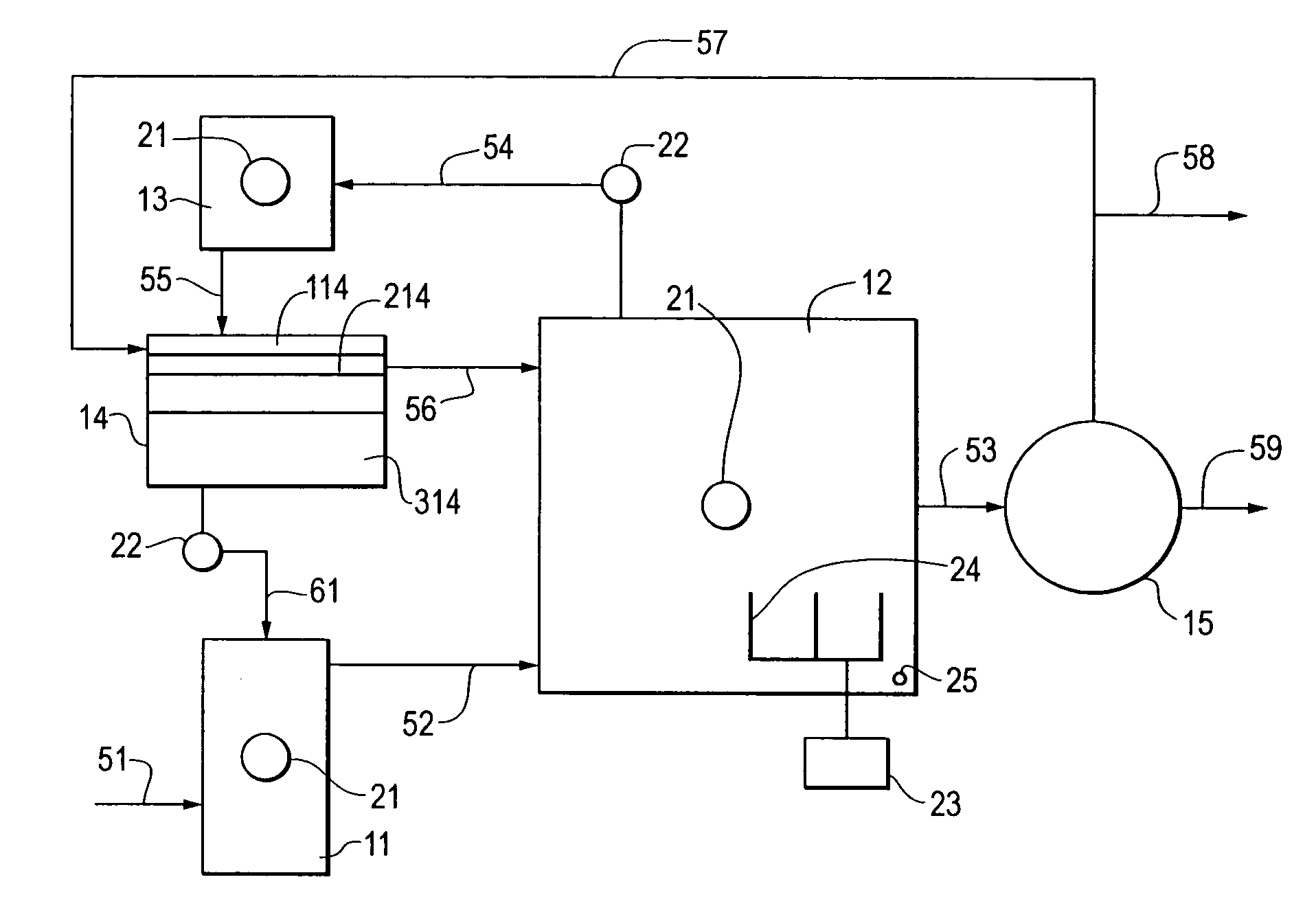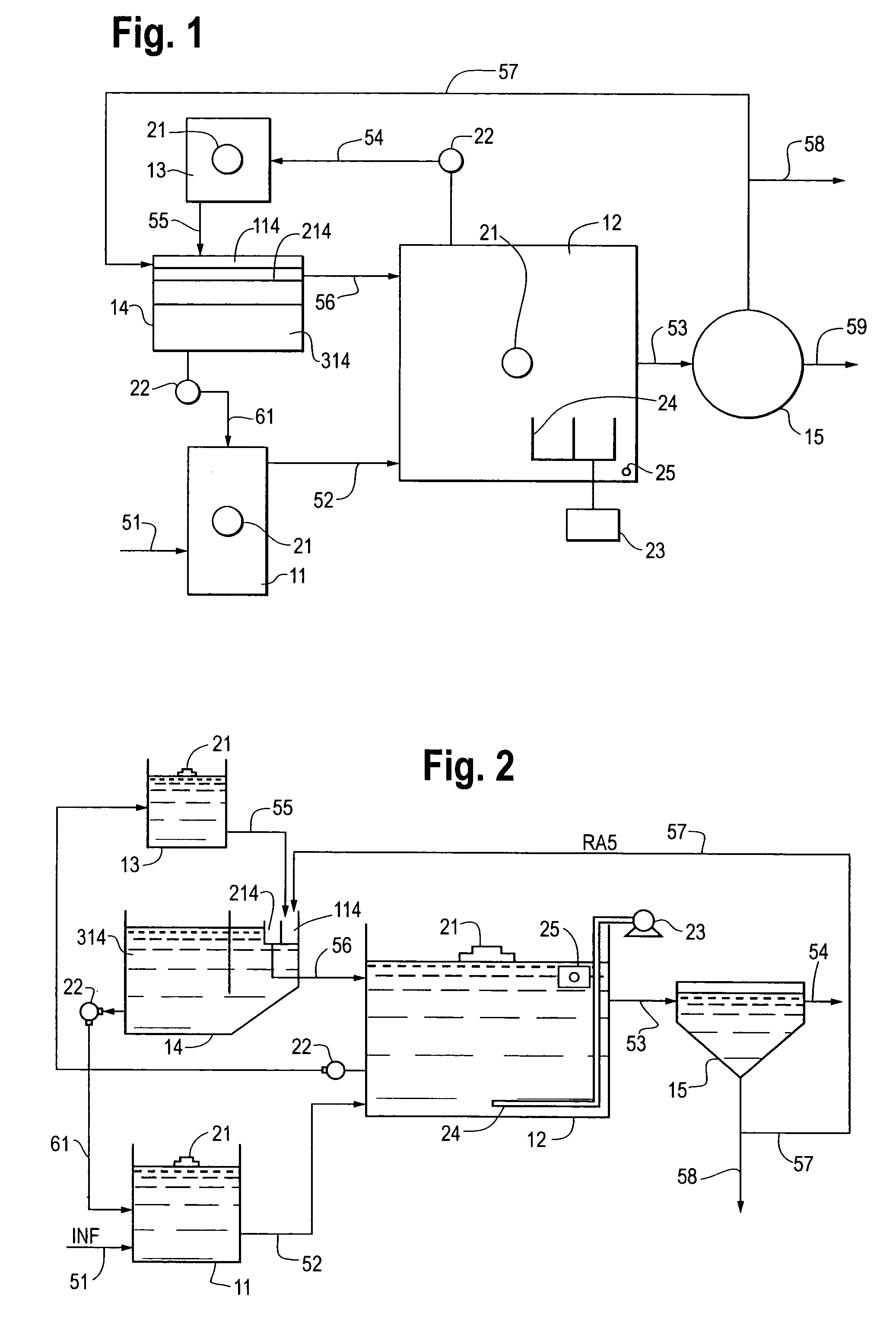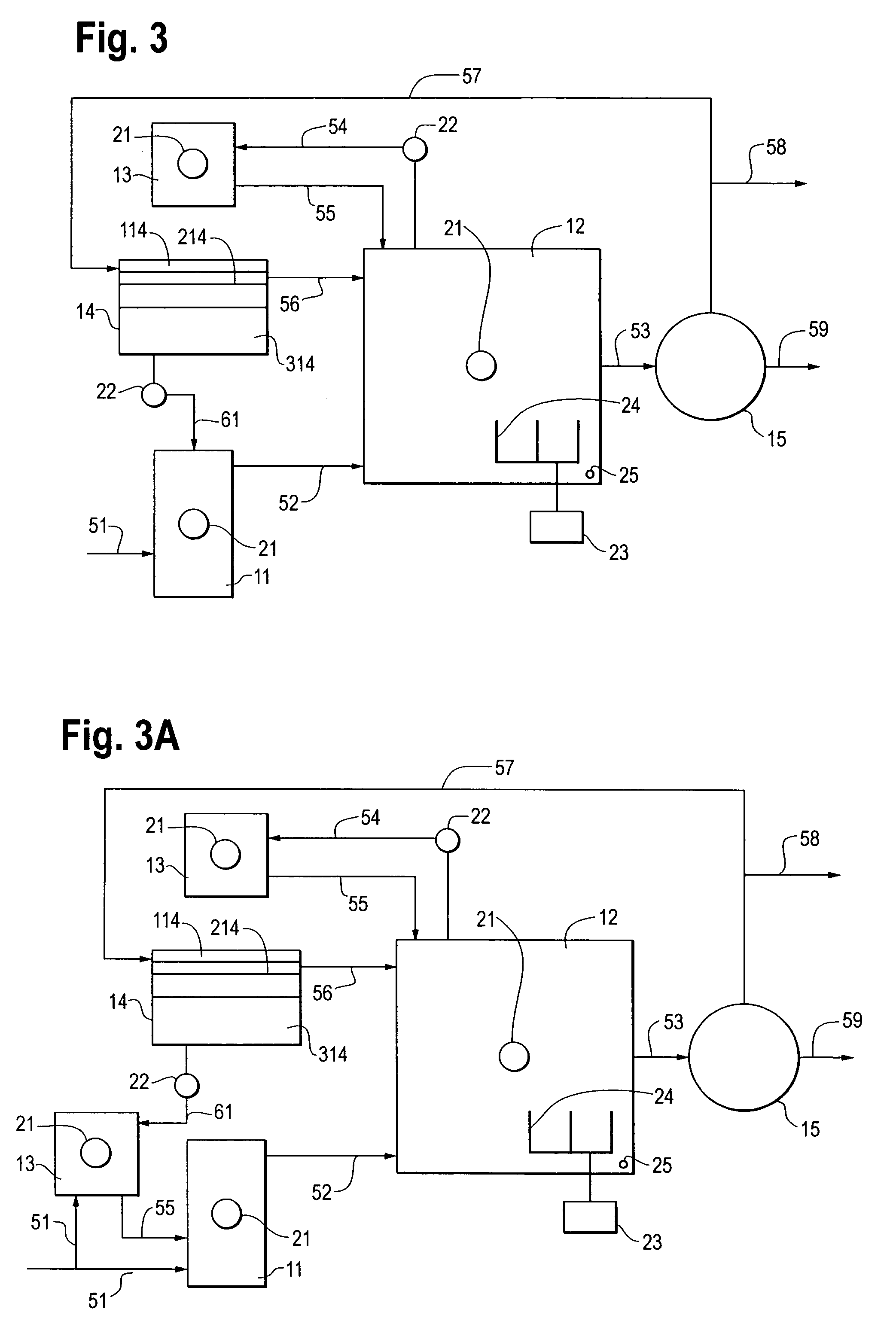Phased activated sludge system
a phased activated sludge and wastewater technology, applied in biological water/sewage treatment, multi-stage water/sewage treatment, sustainable biological treatment, etc., can solve the problems of imposing energy costs on the treatment process, inefficient use of energy, and inability of wastewater treatment plant operators to control the balance between various beneficial forms of nitrogen in the activated sludge reactor vessel, etc., to achieve the effect of reducing power costs and simplifying piping and equipment layouts
- Summary
- Abstract
- Description
- Claims
- Application Information
AI Technical Summary
Benefits of technology
Problems solved by technology
Method used
Image
Examples
Embodiment Construction
[0033]Set forth below is a description of what are currently believed to be the preferred embodiments or best examples of the inventions claimed. Future and present alternatives and modifications to these preferred embodiments are contemplated. Any alternatives or modifications which make insubstantial changes in function, in purpose, in structure or in result are intended to be covered by the claims of this patent.
[0034]In one preferred embodiment of the invention (see FIGS. 1 & 2), influent is directed into an anaerobic vessel 11. The influent can be a raw wastewater influent, but is more commonly the effluent from a previous treatment step such as screening, chemical conditioning or other primary treatment processes as are known in the art. The influent channel 51 conveys the wastewater into an anaerobic vessel 11. It will be understood that a single anaerobic vessel 11 (see FIGS. 1–7), or a plurality of anaerobic vessels (not shown), may be used as part of the present inventions...
PUM
| Property | Measurement | Unit |
|---|---|---|
| concentration | aaaaa | aaaaa |
| concentration | aaaaa | aaaaa |
| concentration | aaaaa | aaaaa |
Abstract
Description
Claims
Application Information
 Login to View More
Login to View More - R&D
- Intellectual Property
- Life Sciences
- Materials
- Tech Scout
- Unparalleled Data Quality
- Higher Quality Content
- 60% Fewer Hallucinations
Browse by: Latest US Patents, China's latest patents, Technical Efficacy Thesaurus, Application Domain, Technology Topic, Popular Technical Reports.
© 2025 PatSnap. All rights reserved.Legal|Privacy policy|Modern Slavery Act Transparency Statement|Sitemap|About US| Contact US: help@patsnap.com



